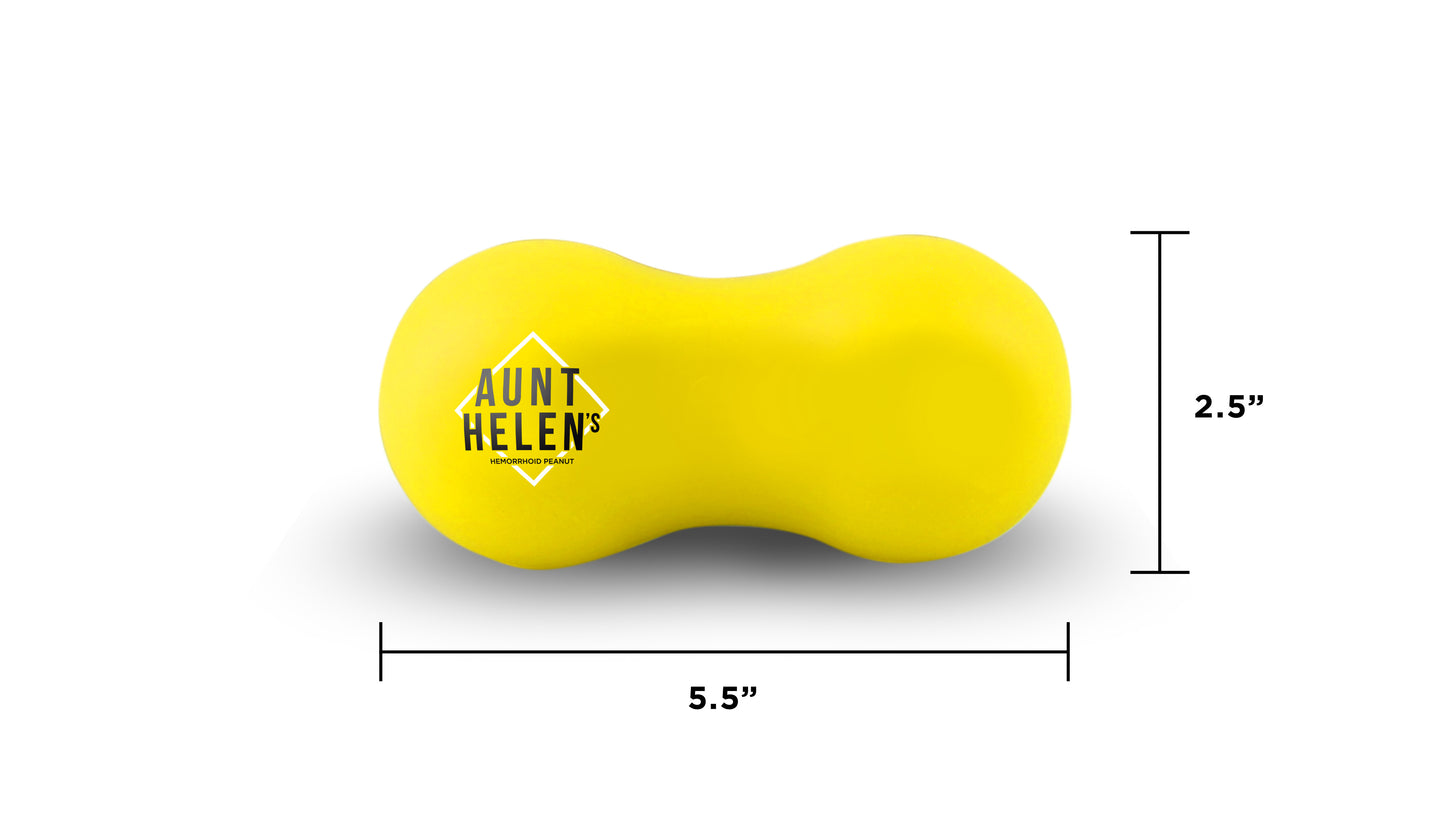

Aunt Helen's
Aunt Helen's Hemorrhoid Peanut
Share



How To Push A Hemorrhoid Back In
When suffering from prolapsed hemorrhoids walking and sitting can many times be frustrating and you can feel irritated in your rectum, you always feel that lump sticking out from your anus and when walking you can feel it every step you take.
Can you push a hemorrhoid back in?
Yes, you can push a hemorrhoid back in. In fact, pushing it back inside can protect the blood vessel and lower your risk of getting a blood clot or hemorrhoid strangulation.
A strangulated hemorrhoid happens when an internal hemorrhoid pushes outside the anus and gets trapped outside by sphincter muscles. The blood flow becomes blocked, which causes swelling and a lot of pain.
Internal hemorrhoids
Internal hemorrhoids lie inside the rectum. You usually can't see or feel them, and they rarely cause discomfort. But straining or irritation when passing stool can cause:
Painless bleeding during bowel movements. You might notice small amounts of bright red blood on your toilet tissue or in the toilet.A hemorrhoid to push through the anal opening (prolapsed or protruding hemorrhoid), resulting in pain and irritation.
External hemorrhoids
These are under the skin around your anus. Signs and symptoms might include:
Itching or irritation in your anal regionPain or discomfortSwelling around your anus bleeding.
Should You Push External Hemorrhoids In
However, external Hemorrhoids cannot be pushed into the anus, as they develop on the skin surface outside the anal opening. If you try pushing external hemorrhoids in, you will experience a lot of pain and also may end up causing more damage to the veins. Hence, do not attempt to push in external hemorrhoids under any circumstances.Internal hemorrhoids-
Internal hemorrhoids lie inside the rectum. You usually can't see or feel them, and they rarely cause discomfort. But straining or irritation when passing stool can cause:
Painless bleeding during bowel movements. You might notice small amounts of bright red blood on your toilet tissue or in the toilet.A hemorrhoid to push through the anal opening (prolapsed or protruding hemorrhoid), resulting in pain and irritation.
Thrombosed hemorrhoids
If blood pools in an external hemorrhoid and forms a clot (thrombus), it can result in:
Severe pain swellingInflammationA hard lump near your anus
Prevention
The best way to prevent hemorrhoids is to keep your stools soft, so they pass easily. To prevent hemorrhoids and reduce symptoms of hemorrhoids, follow these tips:
Eat high-fiber foods. Eat more fruits, vegetables and whole grains. Doing so softens the stool and increases its bulk, which will help you avoid the straining that can cause hemorrhoids. Add fiber to your diet slowly to avoid problems with gas.Drink plenty of fluids. Drink six to eight glasses of water and other liquids (not alcohol) each day to help keep stools soft.
Consider fiber supplements. Most people don't get enough of the recommended amount of fiber — 20 to 30 grams a day — in their diet. Studies have shown that over-the-counter fiber supplements, such as psyllium (Metamucil) or methylcellulose (Citrucel), improve overall symptoms and bleeding from hemorrhoids.
If you use fiber supplements, be sure to drink at least eight glasses of water or other fluids every day. Otherwise, the supplements can cause or worsen constipation.
Don't strain. Straining and holding your breath when trying to pass a stool creates greater pressure in the veins in the lower rectum.Go as soon as you feel the urge. If you wait to pass a bowel movement and the urge goes away, your stool could dry out and be harder to pass.Exercise. Stay active to help prevent constipation and to reduce pressure on veins, which can occur with long periods of standing or sitting. Exercise can also help you lose excess weight that might be contributing to your hemorrhoids.Avoid long periods of sitting. Sitting too long, particularly on the toilet, can increase the pressure on the veins in the anus.
Disclaimer: The information and reference material on our shop is provided as general information to our clients, not to be used as advice prescribed by a medical practitioner. The information contained herein is neither intended to dictate what constitutes reasonable, appropriate or best care for any given health issue, nor is it intended to be used as a substitute for the independent judgement of a medical physician for any given health issue including diagnoses and treatment. Incorrect usage of our product is the responsibility of the purchaser. We will not be liable for the misuse of our product.